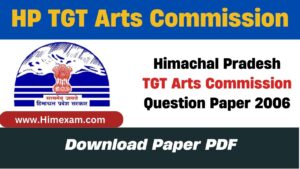Table of Contents
ToggleEmpires and Dynasties After Sangh Janapadas
|| Empires and Dynasties After Sangh Janapadas || Empires and Dynasties After Sangh Janapadas -HP History||
After Sangha Janapadas, different cmpires and dynastics came up in Himachal Pradesh. Mauryan Empire, Shung Dynasty, Kushanas, Gupta Dynasty and Thakurs and Ranas were major of these empires and dynasties. Their description is as follows :-
Mauryan Empire:-
Before 500 BC, the Persians, the Greeks, the Scythians (Sakas) and the nomadic Kushanas from Central Asia invaded Northern India. In 327 BC Alexander, the king of Macedonia crossed Afghanistan and advanced as far as Beas river. According to the Sanskrit and Jaina text, “Mudrarakshasa’ and ‘Parishishtaparvan’, we know that Chandragupta made an alliance with the Trigarta Chief Parvatak. The major portion of his dominion was spread into the hills and his capital was Jalandhara. Parvatak was killed by Chanakya, who did not want division of Magadh Empire and Parvatak’s kingdom was taken over by Chandragupta. Later Parvatak’s son Malayaketu restored the kingdom. Chandragupta’s march towards Beas valley was stopped by king Chitravarma of Kullu. Asoka, the grandson of Chandragupta introduced Buddhism in Himachal Pradesh and erected many stupas there One of these stupas existed in the Kullu valley, which is mentioned by Chinese traveller ‘Hiuen-Tsang’. According to Hiuen Tsang, there were 20 Aramas (Buddha Shrincs) and Viharas at Kangra, where he stayed in 635 AD. The Buddhist text Mahavansha mentions that Asoka’s daughter Majjhima along with other four monks preached Buddhism in five states of Himalayas.
Shung Dynasty :-
After the fall of the Mauryas, the Shunga came to power. They could not control the tribal republics for their own weakness. The tribal republics became free and issued their own coins from the 2nd century BC. Taking advantage of the political conditions at that time, Greeks, Sakas and Parthians invaded and occupied Himalayan states. Numismatic evidence suggests the existence of the Indo-Greeks in the Chamba, Kangra and Hamirpur region.
Kushanas Empire :-
The Kushanas (The-Chitibe) established an extensive empire extending from Central Asia to Mathura and Benares in the East. Their famous ruler was Kanishka. The tribal republics of the Audumbares, Trigarta, Kuluta and Kulindas remained in submission to the Kushanas. Kanishka and Huviska were powerful kings of this dynasty. The decline of Kushan power in the beginning of the 3rd century AD, tribal republics grew powerful for some time. Kushanas were ultimately defeated by a confederation formed by the Yaucheyas and the Arjunayanas (of Punjab). They succeeded in defeating the Kushanas. With the decline of Kushan power in the beginning of 3rd century AD, tribal republics grew powerful.
The Gupta Dynasty
During the 3rd and 4th centuries AD, the Audumbaras and the Kulindas totally disappeared. The Trigarta confederation also ceased to function. At this time, new dynastics in Kullu, Chamba, Bashahr and Sirmaur regions came into existence. In the middle of the 4th century, the Guptas rose to power. Chandragupta’s son Samudragupta in 4th century AD controlled all the Janpadas of Himachal Pradesh. During Skandagupta’s reign a tribe from Central Asia called the Huns started attacking this region. By 5th century AD they started settling here. Their chief was Toramana who was succeeded by his son Mihiragula. During his 20 years reign in Kashmir, Mihirgula invaded some parts of Himachal Pradesh as this region was important for the trade routes which connected Central Asia, Tibet, Ladakh and Kashmir.
Thakurs and Ranas
After the collapse of Gupta Empire a group of petty chiefs known as Thakurs and Ranas emerged as the rulers of Himachal Pradesh. They were independent yet small groups. They claimed themselves to be Kshatriyas. The Ranas are identical with old Rajanakas, the court-aristocracy of the pre-Rajput times The name of Thakur means ‘lord’ and may be applied to any petty chieftain. The period during which they ruled is called as the Apthakuri or Apthakurai. The territory of Rana was known as ‘Rahun’ and of a Thakur was Thakuri or Thakurai. With the exception of Kangra and Kullu, the whole region of Himachal Pradesh was divided into several Rahuns and Thakurais.
Harshvardhan
In between the period of Ranas and Thakurs, there cmerged a strong king named Harshvardhan who succeeded in establishing a unified empire from 606-647 AD. Kuluta (Kullu) became one of the main https://himexam.com/wp-content/uploads/2021/12/Madhya-Pradesh-MP-PEB-Group-2-Sub-Group-4-Various-Post-Answer-Key-2021.jpgistrative unit of his kingdom.









